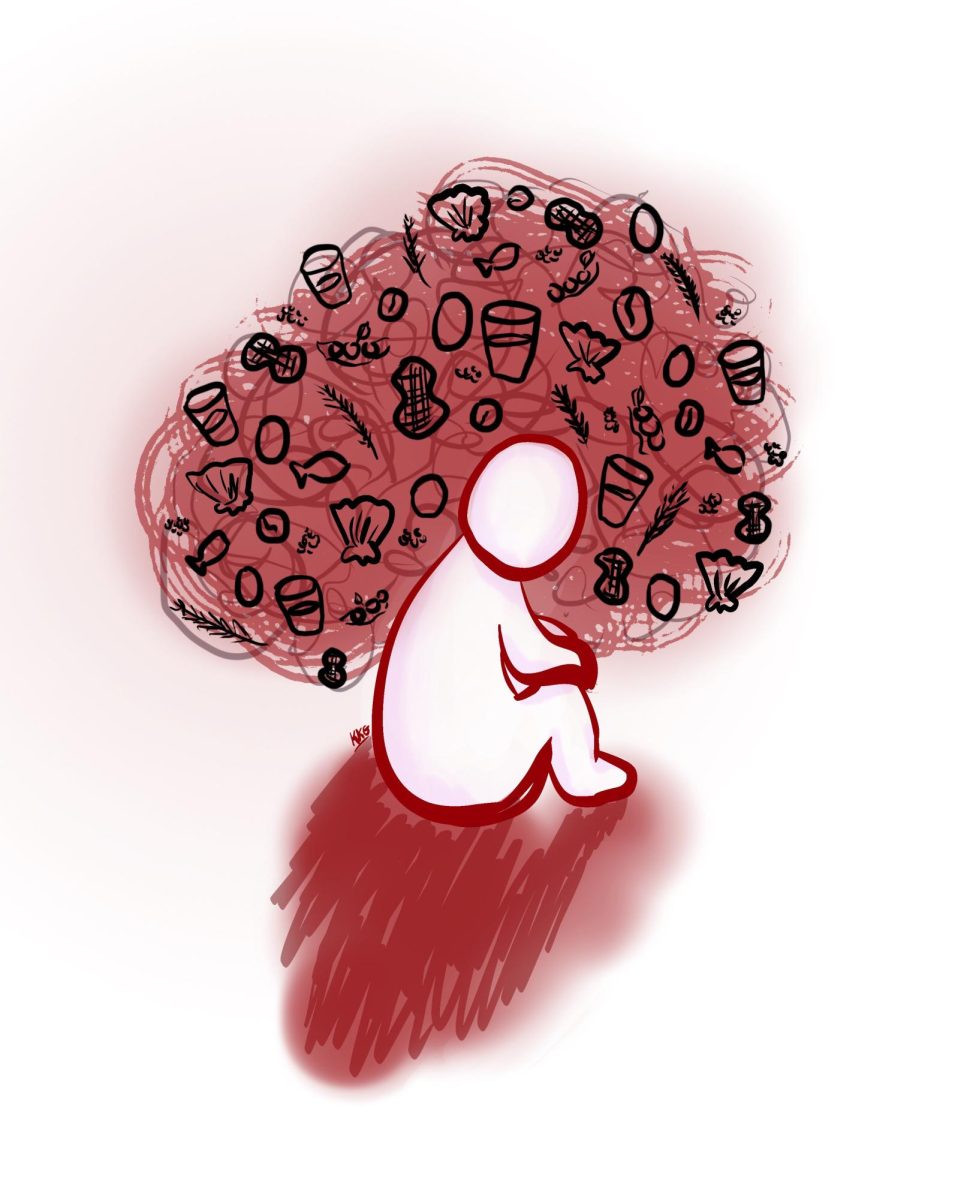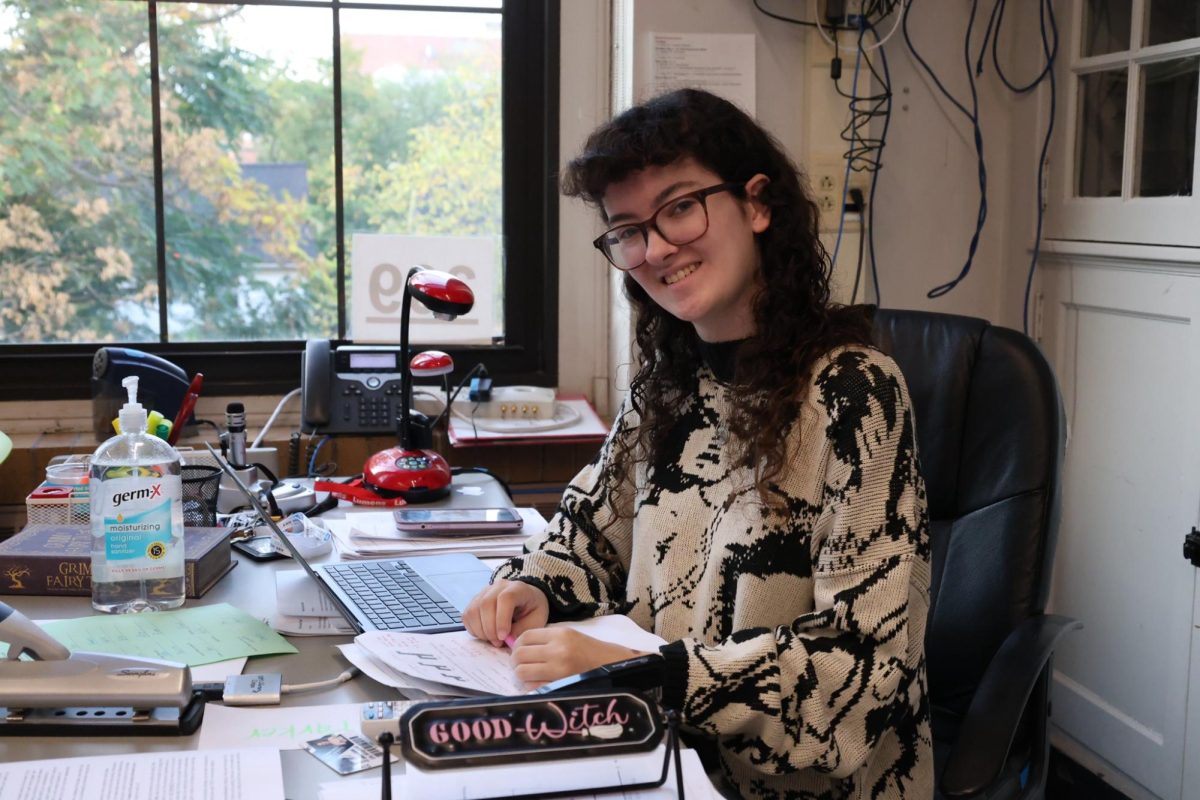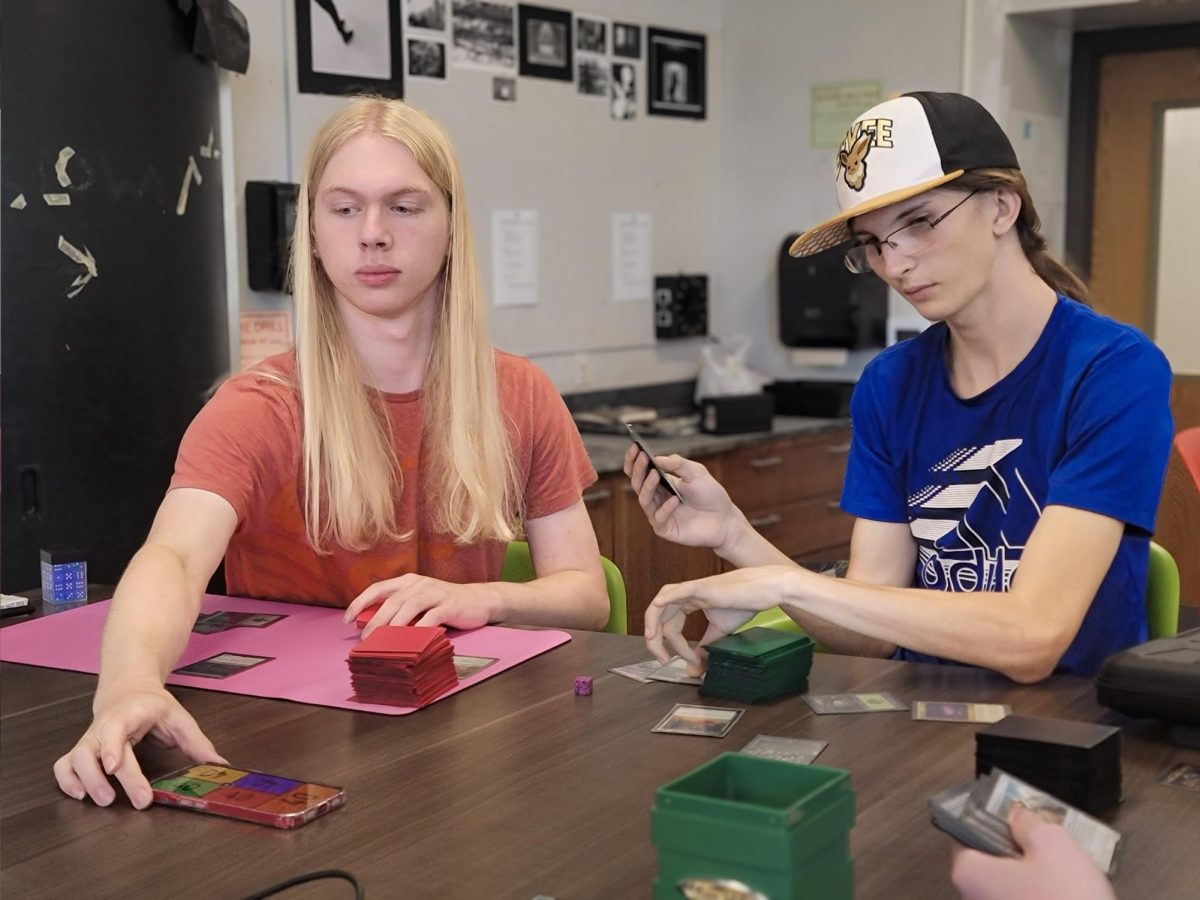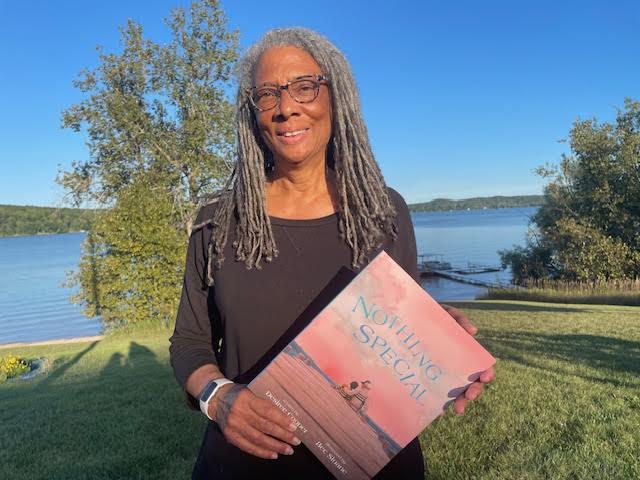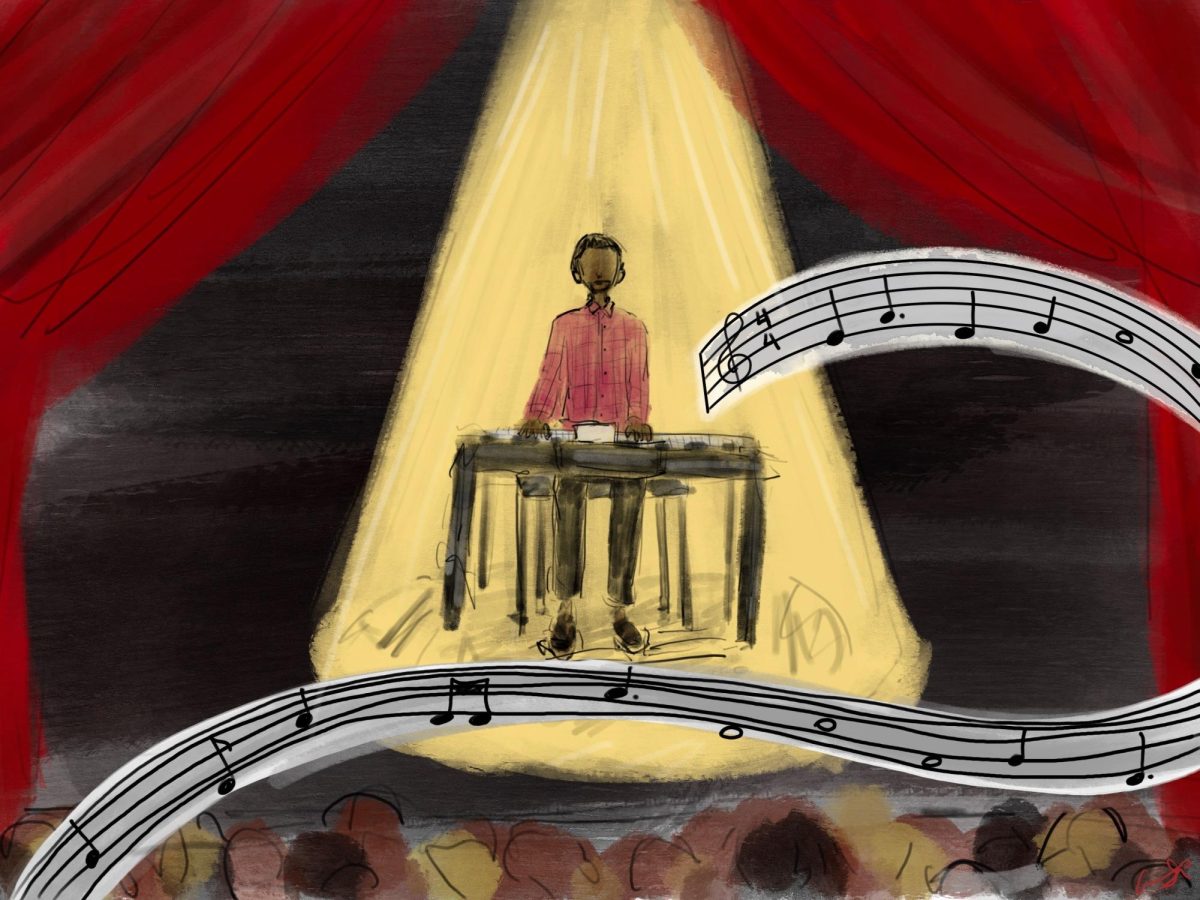Rashes, stomach cramps, runny nose, vomiting and other allergy symptoms are what Cate Weiser experiences when she has an anxiety attack. For Weiser, anxiety arises around food. Is it an allergic reaction? Is it another anxiety attack? Those are the questions that are always on her mind in these times.
“I would convince myself it was an allergic reaction and I would sit at the table for half an hour or so, freaked out,” Weiser said. “This was not a sustainable way for me to live transitioning into college.”
According to Dr. Charles Schuler, an allergist at the University of Michigan (UM), humans feel anxiety when they encounter situations that are unpredictable and/or uncontrollable. Medical emergencies (like anaphylaxis) that can come anytime one eats are a natural and appropriate source of anxiety given that by their very nature they are both unpredictable and uncontrollable, at least without proper training.
While allergists have tools to control these situations, most people experience their first anaphylaxis event as an unpredicted and uncontrolled event. Naturally, individuals would expect their next anaphylaxis experience to be the same. It does not have to be, since allergists can screen food (to avoid exposures) and treat people who experience anaphylaxis with epinephrine, controlling the reaction. However, until someone with food allergies has had a reaction treated with epinephrine and seen the rapid (within one to three minutes) onset of positive results, that person is unlikely to personally believe that epinephrine works so well.
The summer before college started, Weiser began meeting with a therapist who specializes in food allergies. She was able to help Weiser find skills to manage eating at dining halls and friends’ parties. Luckily for Weiser, the University of Chicago (UChicago) has one of the best allergy-friendly programs in the country, with a separate station called “Pure Eats’’ where students with the top nine allergens can eat without worrying about cross-contamination, though there is a downside.
“There are not enough students with food allergies, so they have to market the station as a health station as well,” Weiser said. “There’s a lot of steamed quinoa and cauliflower rice and food that is not very often appetizing.”
Now in her sophomore year at UChicago, Weiser has spent a lot of time bringing her personal pots and pans down to the shared kitchen in her dorm.
“I always eat better than my friends who eat in the dining halls,” Weiser said.
Chicago has been a better place for Weiser due to the food options at restaurants. In Ann Arbor, there were only two restaurants she could eat at without anxiety. In Chicago, there are more restaurants that understand how to accommodate food allergies. Due to this, Weiser’s anxiety around food has dwindled.
When Weiser was first diagnosed with eggs, peanuts, tree nuts, fish, shellfish, dairy, gluten, soy and sesame allergies, her mom took out her own anxiety on investing in research. She’s raised a lot of money for Food Allergy Research and Education (FARE) and kickstarted the food allergy center at the University of Michigan.
“Now, my parents and I don’t really like to speak about my parents’ stress or anxiety around the topic,” Weiser said. “I think that they try not to put their anxieties about it onto me because they saw how difficult it was for me.”
Julie Strassel has recently had to learn how to navigate allergies through her 14-month-old daughter, Vivian Wilson-Tobin. Wilson-Tobin was diagnosed with an egg and peanut allergy as a 6-month-old last June. Strassel knows of no family history of allergies.
“When we first found out, we were bummed,” Strassel said. “We have never had issues before with our other daughter. You go through the whole phase of introducing solids, it’s kind of fun, but all of a sudden we were worried about allergies.”
By the fourth or fifth time ingesting peanut butter, Wilson-Tobin broke out into hives.
“She got the peanut butter all over herself,” Strassel said. “So we wiped her face and there was redness, hives sort of emerged. Does she maybe have sensitive skin? Maybe we rubbed her face too hard? Then we called 911 just to be on the safe side because it was pretty extreme. That was when we found out she had allergies.”
While she didn’t end up going to the hospital during this event, she did have to a few months later.
“I gave her some scrambled eggs we made one morning and her reaction was really quick and very extreme,” Strassel said. “It was projectile vomiting, redness, hives, itching, and so we called 911.
She was put in an ambulance and they did the EpiPen. So, at that point, it went from us being skeptical to okay, this is real. It was worrisome and a life changer. So when I say bummed, things we have gotten used to we have had to get rid of in our house and go through life a little differently. We can’t be nonchalant or relaxed.”
While the allergies haven’t affected Strassel on the day-to-day, they have affected her around the holidays.
“I used to be able to hand her off to somebody, I didn’t have to worry about my child’s safety, but now I can barely let her into other people’s arms,” Strassel said.
“Food allergies impose multiple social difficulties,” Schuler said. “In the first year after a food allergy diagnosis, families avoid travel and restaurant eating almost entirely due to the fear of reactions. Mothers of children under the age of five with food allergies have statistically higher blood pressure than mothers of similar age without food allergies.”
Strassel has thought about the idea of treatment for Wilson-Tobin’s allergies. According to Schuler, oral food challenges in the office are generally quite helpful. Even when a reaction occurs, studies show that quality of life goes up afterward. Schuler calls this the “monster under the bed” phenomenon because you don’t know that the monster is not scary, or even does not exist, until you look. You avoid looking because you’re scared. Thus, when the oral food challenge allows a food allergy patient to face the reaction with the help and safety of an allergist, even if there is a reaction allergists can help people face their fears and take control.
While Strassel is a little nervous about Wilson-Tobin growing up with allergies, she is also optimistic.
“I feel like when she is ready to go to school, we will have to navigate that experience,” Strassel said. “I think it’s going to depend on how the schools’ responses are too and if they’re on top of it or not, and then the social experience of having to sit at a different table or just feeling a little bit left out of certain experiences.”
According to Schuler, social isolation can be increased by food allergy lunch tables and having to have separate food sources. Some children, as they become adults, may either embrace a zero-risk-tolerance approach or go the other direction and ignore their risk. Finding a middle ground is difficult.
Wilson-Tobin has already had a few scares at daycare earlier this year.
“She took a cup where a kid was eating an egg and she put it in her own mouth,” Strassel said. “So we didn’t have to use the EpiPen because she didn’t react but we did give her Benadryl just in case. I can tell it’s stressful for the teachers as well because they are taking on a lot of that responsibility.”
Ryan Silvester, CHS teacher, was first diagnosed with a tree nut allergy in seventh grade. The late diagnosis was hard on Silvester.
“I remember loving pistachios — eating tons and tons of them when I was really young,” Silvester said. “When I found out, I was in my seventh grade social studies class. One of my classmates went to Brazil for spring break, and brought back these chocolates from Brazil. I had one and had a reaction.”
After experiencing allergies first-hand, Silvester has implemented rules in his classroom to keep others safe. Silvester has designated “allergy-free” tables at the back of the room for those who want to eat in his room. He is also very aware of the snacks that he and other students bring in during Forum to make sure that everyone can eat them.
“I think I’m more aware of students that have allergies as well and think about it and that kind of dictates what we eat,” Silvester said.
Weiser transferred into Silvester’s Forum during her time at CHS.
“She told me that she’d never ever eaten with her Forum before because she was always worried,” Silvester said. “For our final Forum day, we had breakfast together and I made sure that everything that we used was allergy-friendly. We had a big breakfast of pancakes, and we made sure that was all allergy-friendly for her so she could have a meal with us, which I think was a really important and powerful moment for her to have that in school and to be recognized.”
As for navigating his own allergies in the classroom, occasionally Silvester will have to reject a homemade baked good offered to him.
“I get anxious,” Silvester said. “I don’t want to go to the hospital.”



